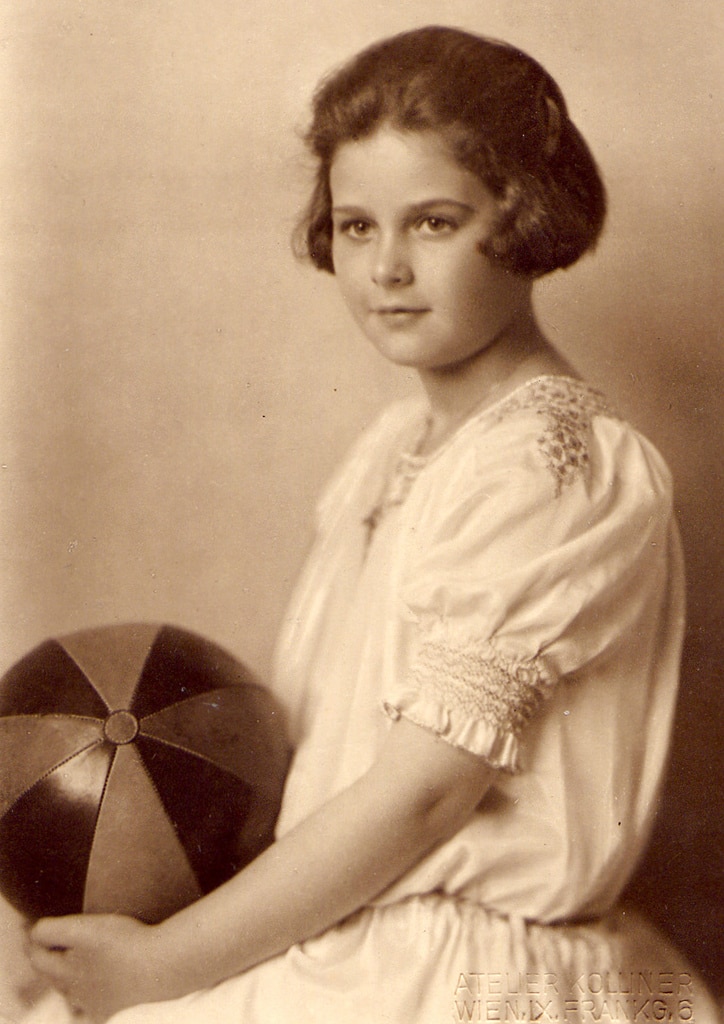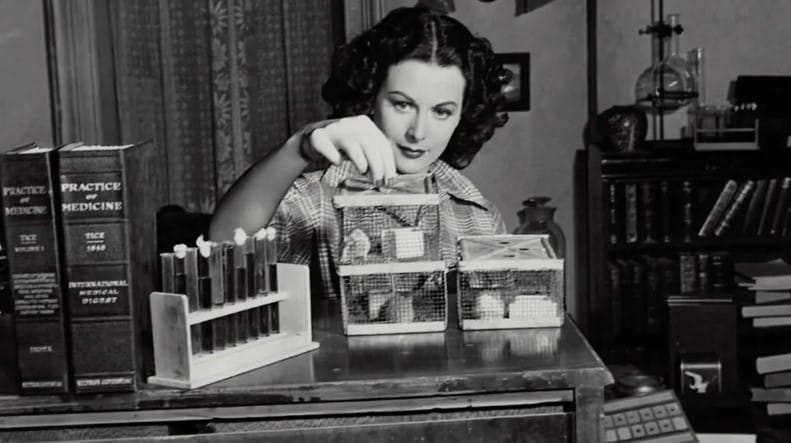The Fascinating Journey Of Hedy Lamarr: Silver Screen Turned Inventor
Hedy Lamarr was a renowned actress during MGM’s “Golden Age”. She graced the silver screen in iconic films like Tortilla Flat, Lady of the Tropics, Boom Town, and Samson and Delilah, where she shared the spotlight with legendary actors such as Clark Gable and Spencer Tracy.
However, Lamarr wasn’t just a Hollywood star; she was also a brilliant scientist. Alongside her acting career, she co-invented an early technique for spread spectrum communications, which laid the groundwork for many of the wireless communication technologies we rely on today.
The Story Of Her Upbringing In Vienna

Hedy Lamarr, originally named Hedwig Eva Maria Kiesler, was born in 1914 in Vienna. She was the only child of Gertrud “Trude” Kiesler (née Lichtwitz) and Emil Kiesler. Her father, Emil, held director positions in two major banks: Wiener Bankverein and Creditanstalt-Bankverein, while her mother, Trude, was a pianist from Budapest, hailing from an upper-class Hungarian-Jewish family.
Growing up, Hedy immersed herself in the arts with her mother and explored Vienna with her father, who shared his passion for technology. He spent time teaching her about various machines they encountered, fostering her love and understanding of technology from a young age. By the age of five, Hedy was already dismantling and reassembling gadgets like music boxes at home.
However, what truly captures her heart is acting. She devoted herself to the craft and began appearing in film roles, drawn to the artistry and allure of the cinema.
Hedy Lamarr’s Rise To International Stardom

Lamar took acting classes in Vienna. One day, she forged a note from her mother and went to Sascha-Film, where she managed to land a job as a script girl. While there, she got a role as an extra in “Money on the Street” (1930), and later scored a small speaking part in “Storm in a Water Glass” (1931). Producer Max Reinhardt then gave her a role in a play called “The Weaker Sex” at the Theater in der Josefstadt.
She met the Russian theater producer Alexis Granowsky, who cast her in his film directorial debut, The Trunks of Mr. O.F. (1931), starring Walter Abel and Peter Lorre. Granowsky soon moved to Paris, but Lamarr stayed in Berlin and was given the lead role in No Money Needed (1932), a comedy directed by Carl Boese. Lamarr then starred in the film which made her internationally famous.
At 18, Lamarr starred in Gustav Machatý’s film “Ecstasy” (Ekstase in German, Extase in Czech). She portrayed the neglected young wife of an indifferent older man. While acclaimed in Europe, the film caused controversy in America due to its perceived sexual content that led to negative publicity, particularly among women’s groups.
Hedy Lamarr’s Attempt To Escape From Her Toxic Marriage
Lamarr took on various stage roles, notably starring in “Sissy,” a play centered on Empress Elisabeth of Austria, which garnered praise from critics. Fans expressed their admiration by sending roses to her dressing room and attempting to meet her backstage. Among them was Friedrich Mandl, an Austrian arms merchant and munitions manufacturer, who pursued her relentlessly.

Mandl, reputedly, the third-richest man in Austria, was a military arms merchant and munitions manufacturer. He was infatuated with Lamarr while she fell for his charm and wealth. Lamarr’s parents disapproved their relationship due to Mandl’s ties to Italian fascist leader Benito Mussolini, and later, German Führer Adolf Hitler,
Her parents, both of Jewish descent, did not approve, due to Mandl’s ties to Italian fascist leader Benito Mussolini, and later, German Führer Adolf Hitler, but they could not stop the headstrong Lamarr.
On August 10, 1933, Lamarr tied the knot with Mandl at the Karlskirche. She was 18, and he was 33. In her autobiography “Ecstasy and Me,” she revealed Mandl’s tight control over her, preventing her from pursuing her acting career and even objecting to a scene in “Ecstasy” featuring a simulated orgasm. Lamarr felt like a captive in their castle home, Schloss Schwarzenau.
As time passed, Lamarr found her marriage to Mandl increasingly unbearable. In 1937, she made the bold decision to break free from both her husband and her homeland. According to her autobiography, she disguised herself as her maid and escaped to Paris. However, other accounts suggest she convinced Mandl to let her wear all her jewelry for a dinner party, only to vanish afterward. She wrote about her marriage:
“ I knew very soon that I could never be an actress while I was his wife. … He was the absolute monarch in his marriage. … I was like a doll. I was like a thing, some object of art which had to be guarded – and imprisoned – having no mind, no life of its own.”
After her first divorce, Lamarr still worked hard as an actress. Known as one of Hollywood’s most stunning and exotic leading ladies, she starred in several acclaimed films during the 1930s and 1940s. Some notable ones include “Lady of the Tropics” (1939) alongside Robert Taylor, “Boom Town” (1940) featuring Clark Gable and Spencer Tracy, “Tortilla Flat” (1942) with Tracy again, and “Samson and Delilah” (1949) opposite Victor Mature. Interestingly, she was initially considered by producer Hal Wallis for the lead role in the iconic 1943 film “Casablanca,” a role that eventually went to Ingrid Bergman.
Hedy Lamarr As An Inventor Of Revolutionary Communication Technology

In the midst of her booming career, Lamarr took on a different kind of role, assisting the Allied Forces during WWII alongside her friend, composer George Antheil. Lamarr learned a great deal of her knowledge on warfare technology, specifically those used by the Germans, from her previous husband, Mandl. Lamarr shared her knowledge with Antheil, who reciprocated with his expertise in piano.
Their collaboration birthed an ingenious idea: to prevent jamming through frequency hopping, inspired by Antheil’s previous work in music. In that earlier work, Antheil attempted synchronizing note-hopping in the avant-garde piece stemming from his work on the avant-garde score for the film Ballet Mechanique, which involved synchronizing multiple player pianos. Realizing the potential, they adapted this synchronization concept to change radio frequencies, envisioning a compact mechanism akin to their musical innovation.
Despite their groundbreaking invention, the Navy dismissed it, citing concerns about its size for fitting into a torpedo. Disheartened by the rejection, Lamarr and Antheil halted further pursuit of their invention.

Nearly 20 years later, recognized the advantages of changing radio frequencies during communication. They implemented electronic “spread-spectrum” technology, which utilized the same approach, on military ships. Lamarr and Antheil’s innovations extended beyond the military, influencing modern devices.
It is often said that Lamarr helped invent Wi-Fi through this patent, but the story is more complex. Lamarr and Antheil patented their invention in 1942, but it remained classified until 1981. During that time, it was solely used in military applications like sonar or satellite communications.
Before the patent became public knowledge, other spread spectrum techniques emerged independently, including direct-sequence (DS) spread spectrum. This method spreads a signal across a range of frequencies instead of hopping between frequencies one at a time.
When Wi-Fi standards were initially established in 1997, they permitted both FH and DS systems, but DS quickly gained dominance. Currently, there are no FH Wi-Fi devices in use. So, although Lamarr pioneered the concept of spread spectrum communication, the direct connection to Wi-Fi remains unclear. However, the Bluetooth standard, used for connecting devices over short distances, does utilize FH. It’s evident that Lamarr and Antheil’s invention significantly influenced the development of communication technology.

In 1997, Lamarr and George Antheil were jointly honored with the Electronic Frontier Foundation’s Pioneer Award and Lamarr also was the first woman to receive the Invention Convention’s BULBIE Gnass Spirit of Achievement Award, known as the “Oscars of inventing”. Given to individuals whose creative lifetime achievements in the arts, sciences, business, or invention fields have significantly contributed to society. The following year, Lamarr’s native Austria awarded her the Viktor Kaplan Medal of the Austrian Association of Patent Holders and Inventors.
Lamarr died in 2000, but until 2014, she was posthumously inducted into the National Inventors Hall of Fame for frequency-hopping spread spectrum technology.

